On November 12, KUED, the public television station in Salt Lake City, premiered a one hour documentary titled “The Battle Over Bears Ears.” In 2017, producer Nancy Green and her crew came to San Juan County and spent weeks there, trying to do justice to the issue. They sought out and interviewed a diverse group of people, including me, regarding the ongoing and seemingly never-ending controversy. Green asked important questions, listened and recorded all sides of the issue, and seemed to grasp the complexities of the debate surrounding the recent history of public lands in southeast Utah.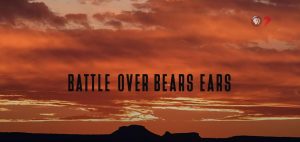
Still, when the film finally went to air and streamed online last month, I was hesitant to look. (Click HERE to watch.) I’d practically given up hope that the coverage of Bears Ears by the mainstream media would ever include an evenhanded and remotely honest approach. Until now, the Bears Ears narrative seems to have been created and disseminated by the machinations of the massive outdoor industry and heavily financed mainstream environmental organizations, and spoon-fed to reporters across the country. (If Patagonia says it, it must be true).
To show how pervasive and effective the propaganda machine has worked, even one of our neighbors here on the High Plains who’s never been to Utah contacted me one evening. Alarmed, she said, “We just watched the news about this Bears Ears place. That’s where you lived right? So they’re going to build oil wells and a coal mine all over it? That is AWFUL!”
Of course, none of it was true and when I finally forced myself to sit down and watch the KUED documentary, I was relieved and grateful that finally, someone had set the record straight. The imminent destruction of the Bears Ears area by oil and gas was a complete fabrication.
The KUED film is as close as anyone in the media has come to presenting balanced coverage of the story. While there are parts of the documentary that give me heartburn and while there are perspectives presented as fact that I know are untrue, it was still a mighty effort by Green and her crew to seek out voices that heretofore had been totally ignored.
KUED’s work should be mandatory viewing for the people who produced and presented two recent national media accounts of San Juan County issues that played fast and loose with the facts. Recently, in The Zephyr we replied to those stories— In “Media Bias part 1” we examined a disturbingly distorted CNN segment about Bears Ears and Native American issues that broadcast last summer. It was part of the “Van in the van” series with Van Jones and was supposed to present both sides of the debate.

Click this image to read MEDIA BIAS: UP CLOSE & LOCAL, Part 1 (CNN’s Spin on Bears Ears NM)
An issue later, we followed up with a critique of another account that appeared on the PBS Newshour. The six minute segment was assembled by a team from the USC/Annenberg School of Journalism under the leadership of former TV reporter Judy Muller. And again, it was supposed to provide an evenhanded account of the conflicts between Native Americans and Anglos in San Juan County.
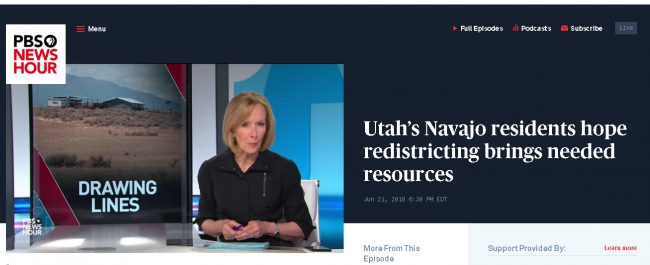
Click this image to read MEDIA BIAS, UP CLOSE & LOCAL, Part 2: PBS, RACISM & OMITTING THE FACTS IN SAN JUAN COUNTY, UTAH
In both the CNN and PBS stories, comments and observations were deleted or edited to create a narrative that had clearly been pre-determined before the interviews ever happened. Basic facts were ignored or never pursued. They were lies of omission, plain and simple.
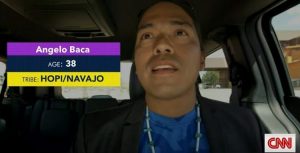 For example, we’ve mentioned the myth of oil wells on the Bears Ears; in the CNN story, one of the interviewees, Angelo Baca describes the “devastation” from energy development as the CNN van drives across a landscape riddled with oil wells. It obviously gave viewers the impression that the “devastation” was within the monument boundary. But it was untrue. CNN never mentioned that the wells were some thirty miles east of the monument. Efforts to set the record straight by another participant, Eva Ewald, a Native American who lives full-time in San Juan County, were left out of the final cut.
For example, we’ve mentioned the myth of oil wells on the Bears Ears; in the CNN story, one of the interviewees, Angelo Baca describes the “devastation” from energy development as the CNN van drives across a landscape riddled with oil wells. It obviously gave viewers the impression that the “devastation” was within the monument boundary. But it was untrue. CNN never mentioned that the wells were some thirty miles east of the monument. Efforts to set the record straight by another participant, Eva Ewald, a Native American who lives full-time in San Juan County, were left out of the final cut.
But it’s CNN, after all, the 24/7 “news channel,” that has all but abandoned objective reporting in the last several years. We doubt Van Jones and his producers even knew the most rudimentary facts about the issue before they were plopped down in the middle of San Juan County and instructed to act like they understood the topic. At every point where there was an opportunity for Jones to ask a follow up question, or to challenge a comment, or to seek clarification, the moment passed in silence. Clearly, it wasn’t scripted so it wasn’t asked.
We contacted CNN and asked for their reaction to the questions The Zephyr raised, but we never heard back. Par for the course.
The PBS segment was different–they should have known better.
Judy Muller and her team from USC/Annenberg came to San Juan County last Spring to work primarily as interns for the local weekly, the San Juan Record, but their participation in the PBS story was unknown to almost everyone.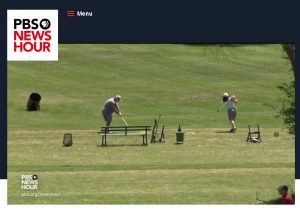
Like CNN, their plan was allegedly to seek all sides of the many issues that drive the debate there. They interviewed dozens of citizens, both Native American and Anglo, but when the PBS segment aired, the narrative was reduced to a conflict between the Mormons and the Indians. Issues that were critical to understanding the conflicts there were left out of the PBS story completely. But it’s not like the leaders of the USC team were oblivious to them.
Originally, I was on the list of possible interviewees and was contacted by Muller in March. She never followed up and, consequently, I was 700 miles away during their stay in San Juan County. But in May, Muller and I did correspond by message and I expressed concerns that some of these difficult issues might be misunderstood or misinterpreted. In May I wrote:
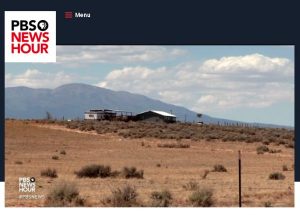 “…do you understand the complexities of a county where 25% of it is a ‘sovereign nation’ not beholden to the laws of that county? Can you understand how concerns other than racism might be at play? For example, San Juan County law enforcement has NO authority on the reservation (unless invited by Tribal Police.).”
“…do you understand the complexities of a county where 25% of it is a ‘sovereign nation’ not beholden to the laws of that county? Can you understand how concerns other than racism might be at play? For example, San Juan County law enforcement has NO authority on the reservation (unless invited by Tribal Police.).”
I told Muller that perhaps, to some people, “it’s fair to seek revenge instead of equality.” That maybe this is what the goal in 2018 has become. But I continued to try and explain more specifically the complex nature of the debate. I wrote:
“But here’s the unique aspect. Navajo voters may be able to swing the election to the candidate of their choice…BUT to no effect. They can elect the sheriff…but that sheriff has no authority on the Navajo Nation. Likewise, Navajo citizens reside on what’s really Federal Trust lands…few Navajos own land; therefore they don’t pay property taxes. Consequently, they can vote for the candidate who promises to raise taxes, without worrying about paying them Remember ‘Taxation without representation?’ This is really ‘representation without taxation.’ If nothing else, it’s extremely more complicated than anyone in the media has been willing to admit.”
Muller replied in part, “All that you have said in this latest message is information we have already learned in the three days we have been here. The personal property tax issue is a huge bone of contention and we are talking to everyone involved in the special election (including voters) about that.”
But the “bone of contention” was never mentioned in the PBS segment. Nor was Native American sovereignty. Nor was there any mention of jurisdictional issues in law enforcement, or the fact that the Navajo reservation also receives major funding from the federal government. The segment highlighted the lack of health services on the Navajo Reservation but failed to mention the recently completed state-of-the-art clinic in Montezuma Creek, or the addition of an ambulance service three years earlier, or the jurisdictional conflicts as they relate to road construction and maintenance.
None of these issues found the way into the PBS story.
The Zephyr response to the PBS story was posted on October 1, but we never heard from Judy Muller or any member of her USC/Annenberg team regarding our criticisms of their PBS segment.
Muller did contact San Juan County resident Janet Wilcox, who was interviewed by the Muller team, but whose comments never made it to air. Wilcox had provided a comment for the Zephyr “Media Bias” article, regarding the Muller/PBS segment. She wrote in part:
“Like the wolf in sheep’s clothing, the Annenberg team had a hidden agenda when they came to San Juan County…lurking in the future was the goal to disparage San Juan County and expose the supposed disparity in services and representation of Navajo people. What they failed to investigate was the convoluted laws and decisions imposed by Navajo tribal government itself, that interferes with real progress in Utah.
“No where in the story does it discuss the responsibility of the Navajo tribal government, and why they have been neglecting their own people… For decades Utah Navajos have been treated like orphans by the Navajo Nation.”
Now according to Wilcox, Muller called to complain that the Zephyr article was “too long and detailed” and that consequently, “nobody will read it.” Further, according to Wilcox, Muller blamed any misconceptions on PBS’s editing of their original cut, though she never identified what had been removed. And Muller insisted that the PBS segment had not meant to insult anyone.
As Muller noted in one of our message exchanges, she is a “professional journalist of some 40 years,” and I’d always believed that if television reporters were ever frustrated by the limitations of their own jobs, it was the time and content restrictions placed on them by the very nature of the TV medium.
Consequently, I would have thought that we shared a common respect and an understanding of the absolute need for “long form journalism.” I still believe in honest, in depth reporting that’s longer than 160 characters. But I also believe that even in the six minutes Muller and her team had to analyze the situation in San Juan County, they could have utilized that time in an honest and evenhanded way. The fact that neither Muller, nor her USC students, nor PBS took issue with any of the facts we presented in the “too long and detailed” article is telling.
The truth is, the PBS story could have provided a great service to both Anglos and Natives in San Juan County and to the PBS viewership across the country. Facts matter.
Both Native American candidates ran on the premise that San Juan County does not equitably share its revenues with the part of the county that lies within the Navajo Nation. That was the theme of the PBS broadcast.
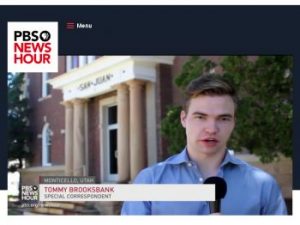 But hard questions needed to be asked. How do either Willie Grayeyes or Kenneth Maryboy, who were elected on November 6, plan to deal with these perceived injustices? As candidates, PBS could have asked the questions…
But hard questions needed to be asked. How do either Willie Grayeyes or Kenneth Maryboy, who were elected on November 6, plan to deal with these perceived injustices? As candidates, PBS could have asked the questions…
Where specifically do they see inequities that they believe need to be corrected? How will they change the budget? How will tax dollars be distributed? What departments will be affected? Schools? Roads? Social services? Health care? Will the new commissioners reduce services in the northern part of the county to better serve residents they think are being denied equal benefits in the south? Or do they plan to raise taxes? Should San Juan County citizens expect major personnel changes after they take office?
Those are the real issues here. And it is absolutely fair to ask and seek understanding of the complexities that exist on Native American reservations, where the land is actually held in trust and owned by the federal government. Explaining how the tribes are funded and the matter of native sovereignty are vital to understanding the issues and the disagreements. the PBS/Muller/USC Annenberg production team did nothing to address these issues.
As I noted in the article…
At a time when every part of this country is at war with each other, when extreme polarization and the refusal to even hear, much less listen, to a different point of view has become our daily practice, the students and especially their faculty leaders had an opportunity to do something different.
In fact, it was even their stated intent—to find the ‘nuance.’ To find the complexities in a story, or as the USC course syllabus proclaimed, “to bridge the gap between so-called ‘coastal elites’ and rural Americans.” They were urged “to search for nuance in stories,” and avoid “preconceived notions based on what they might have heard or read.”
The course had a goal: “Instead of discussing the intense partisan divide between urban and rural America, we wanted them to explore it firsthand, through talking to people who were different from them in every way.”
It was such an extraordinary opportunity–the chance to find common ground–and the USC Annenberg interns and the professional journalists who led them, threw it all away. Nobody learned anything, and so the divide grows wider. Trust withers. What was the point?
We’re still asking the question.
Jim Stiles is Founder and Co-Publisher of the Canyon Country Zephyr.


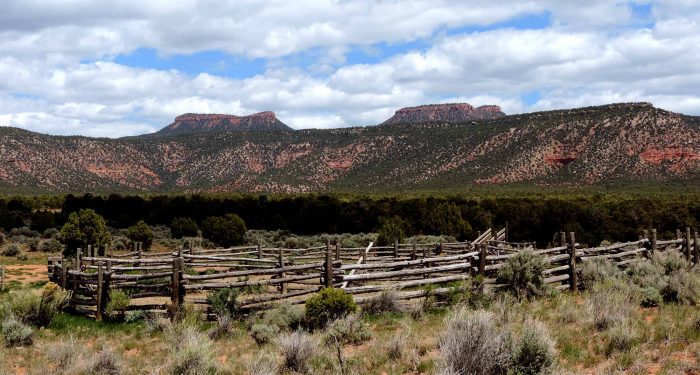
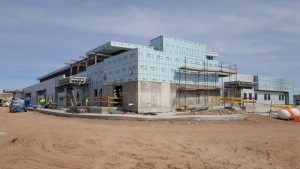


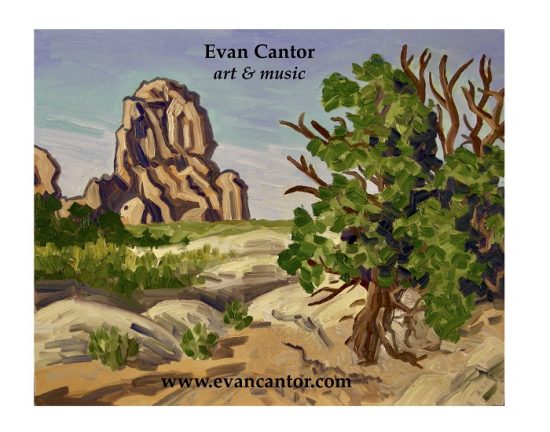

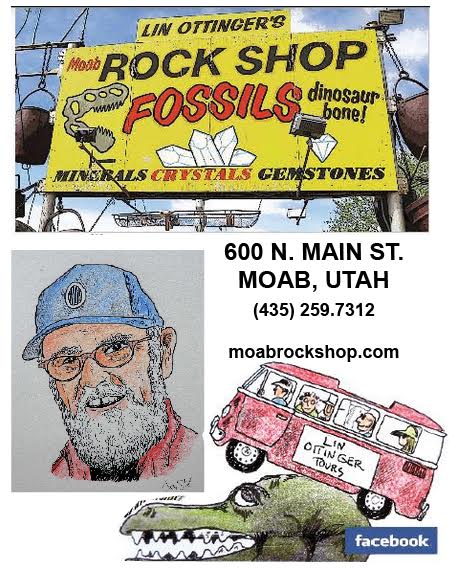



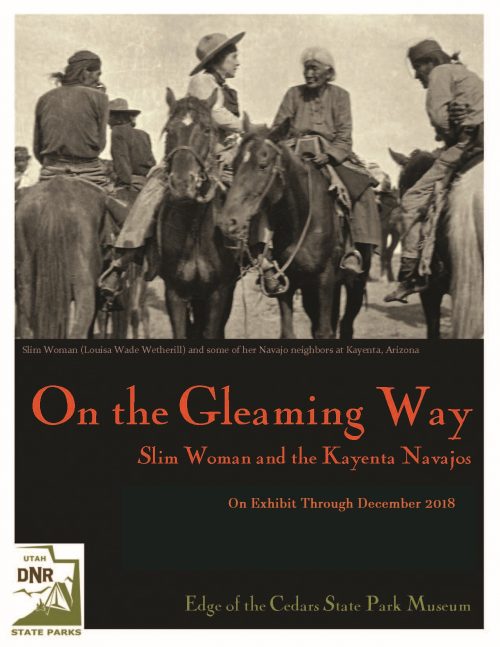


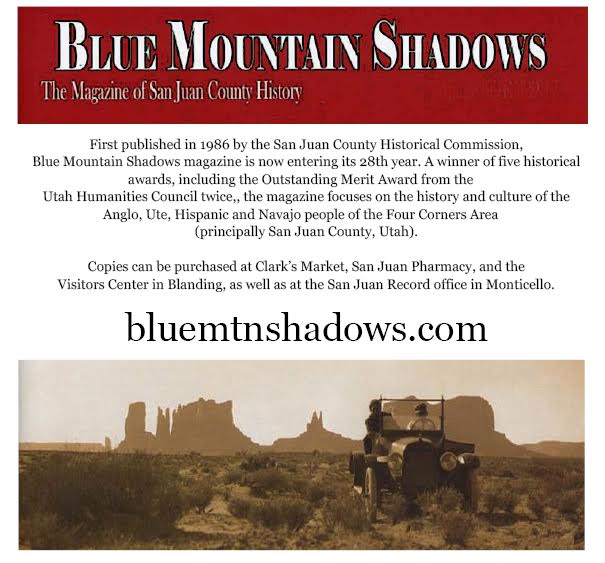
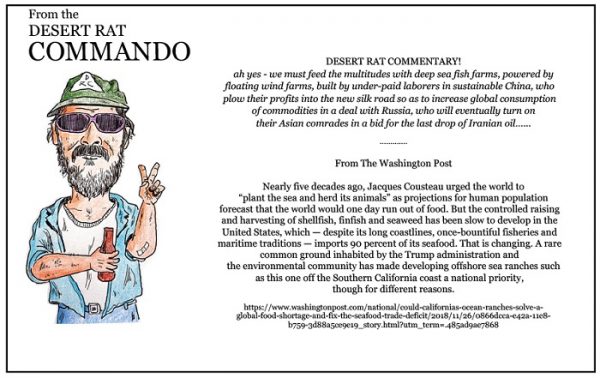
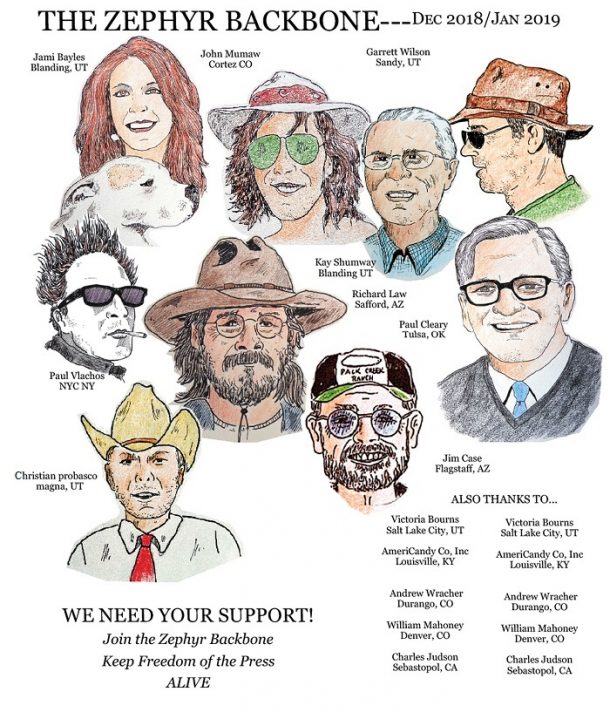
I don’t know Stiles, I’m starting to think we never really had an unbiased media. Surely there have been honorable investigative journalists over time, trying to present facts and letting the reader or viewer come to their own conclusions, but they are a small, small percentage of the “media”. People started buying newspapers at the beginning of the Republic, so they could demonize opponents with slander and lies in order to gain power. Seems like sometime in the 1990’s the bulk of the media across the globe was in the hands of seven corporations. We didn’t even bat an eye. Look at the entertainment industry, when did some millionaire celebrities opinion count more than anyone else’s. The fact is, we are a rather stupid and gullible bunch, we just want to be fed “news” that meets our version of reality, not even realizing that said reality is created by the news. We have taken broad educational requirements out of the curriculum in schools and universities. We no longer require students to learn history, or political systems, or English, or earth history, or read great literature. We don’t teach them how to think for themselves, although we’ve convinced them otherwise. We now have a bulk of citizens who have no ability to really analyze information and decide what is false and what is true, but hey, they can create a website, write computer script, or weave baskets underwater. I don’t have an answer, but anyone who can’t see that the “news” has turned into a giant propaganda machine… well, like I said, we’re a stupid society…..
Jim, have you talked with Willie or Kenneth? It’s a little more difficult than you may be putting on.
To “Hunter S. Thompson,” first we require that commenters use their real name and not hide behind pseudonyms, so unless you really ARE the Risen spirit of HST, you need to come forward and identify yourself. Second, I have no idea what your comment means. “…a little more difficult than you may be putting on?” Please explain. Poets and activists can speak in the subjective; elected officials must use facts and information to make decisions. Last month, these questions for the commissioners-elect (and more) were sent to both Grayeyes and Maryboy by Zephyr contributor Bill Keshlear. Bill even offered to drive to San Juan County from Northern Utah to interview them. Neither replied. So as Mr Grayeyes advised recently, we’ll just have to wait until January 15…
About 30 people showed up Tuesday at the University of Utah to mark the anniversary of President Donald Trump’s proclamation that shrunk Bears Ears National Monument by 85 percent. Several documentaries produced by Native Americans were shown and filmmakers discussed their work.
Moderator Angelo Baca (mentioned above), a staff member of the Salt Lake City-based activist group Utah Dine Bikeyah and graduate student at New York University, said Dec. 4 is an important benchmark in the fight to create and now reclaim President Obama’s version of Bears Ears National Monument. UDB hosted the event.
Many stayed to the end for a freewheeling question and answer session with activists who candidly discussed among other things their political strategy to “undermine the Trump administration,” in the words of panelist Keala Carter, a public lands specialist with Bears Ears Inter-Tribal Coalition, and “re-indigenize” the region, according to Honor Keeler, assistant director of UDB.
UDB board chair and San Juan County commissioner-elect Willie Grayeyes talked in general terms about how he has been the target of shady political maneuvers.
He said “they” sent Navajo Nation police to investigate him, presumably related to claims filed earlier this year that he was not a resident of Utah. It seems unlikely that police working for the sovereign Navajo Nation would take direction from non-tribal officials in San Juan County, Utah.
“They” have other plans for him, he said. “They” halted planning on a road project when he filed for commissioner. Remember when Grayeyes’ sister told authorities he lived in Tuba City, Ariz., not Utah? She was joking, Grayeyes said. Navajos like to joke around. Did he just implicate his sister in the crime of lying to law enforcers conducting an investigation?
He offered no evidence to support any of his comments.
Grayeyes has an important symbolic presence in the national political campaign and gave no indication of stepping down from his UDB role.
Grayeyes’ career has been funded in large part by organizations – “outsiders” – without interests in local social services, health care, all-weather roads, schools, property taxes, building inspections and marriage licenses.
He said he was in the process of learning more about these nuts and bolts of running the county. “We’re getting information on what’s going on,” he said. On personnel or policy changes: “We won’t know until January.”
But it’s important to ask whom will he serve? All of his SJCo constituents (45 percent voted for his opponent, Kelly Laws) or his long-time allies funding the monument campaign. Will he curb his activism regarding expansion of Navajo sovereignty rights beyond the reservation north of the San Juan River into Bears Ears country to represent the views of conservative Navajos and ancestors of Mormon pioneers?
Will San Juan County policy be influenced by Grayeyes’ religious beliefs, possibly in violation of both the Utah and U.S. constitutions? Utah Dine Bikeyah’s public comments on land use include religious appeals. A spiritual adviser, Jonah Yellowman, sits on its board. UDB, led by Grayeyes, begins meetings with prayers in the Navajo tradition. Last night’s event included a prayerful song in recognition of a tragedy. It was a short religious ceremony, again in the Navajo tradition.
The fireworks begin on Jan. 15 when Grayeyes and Kenneth Maryboy, also on the board of UDB, take over the SJCo commission.
There was talk of healing on Tuesday – at least among tribes. A video, apparently funded with help from Outside magazine, showed members of several tribes that historically have not exactly been on cordial terms getting together for “unity” moments on a run to Bears Ears. UDB’s schwag is even engraved “Bears Ears is Healing.”
Conflict, however, seems to be an acceptable strategy when dealing with anti-monument political opponents. You need revolution before healing, said Carter.